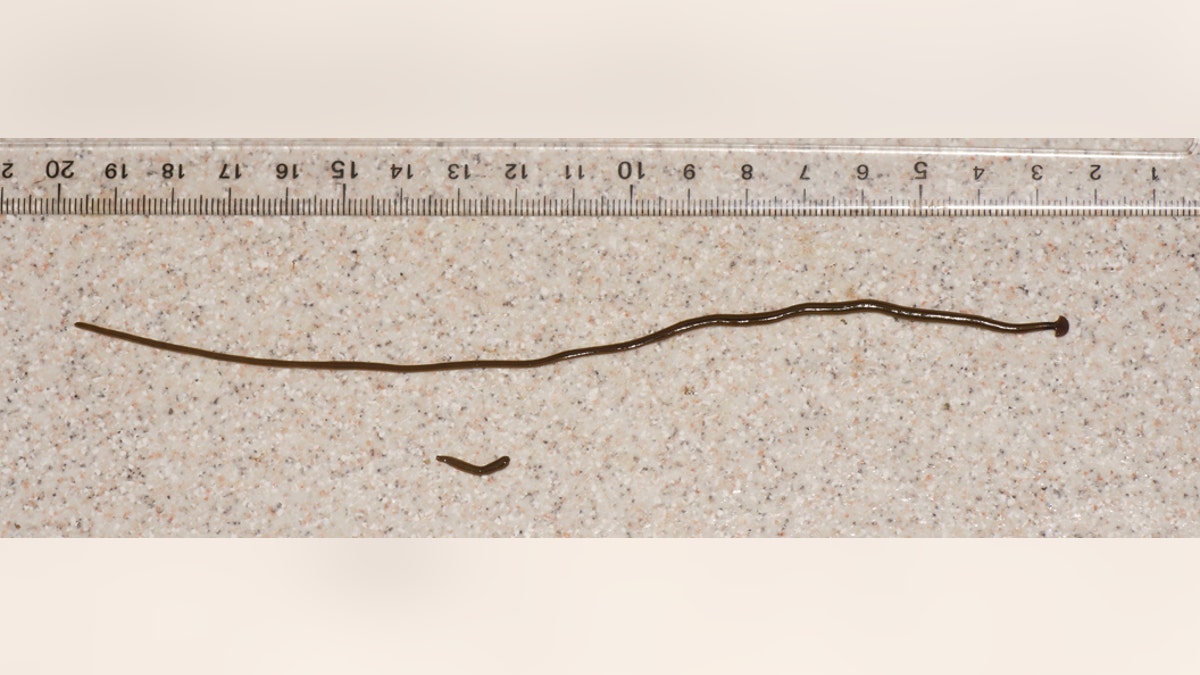
The expanded headplate, transverse black band (‘collar’) at the neck, and the median, paired lateral, and marginal dorsolateral dark longitudinal stripes are evident. Note that the median dorsal stripe does not pass onto the headplate. (Photo by Pierre Gros)
It may sound like something out of a 1950's B-horror movie, but giant-sized hammerhead worms are invading France.
Giant hammerhead flatworms are taking over parts of France, disrupting the ecosystem and causing a concern for researchers.
"The present findings strongly suggest that the species present in Metropolitan France and overseas territories should be considered invasive alien species," the study's discussion reads.
"Our numerous records in the open in Metropolitan France raise questions: as scientists, we were amazed that these long and brightly coloured worms could escape the attention of scientists and authorities in a European developed country for such a long time; improved awareness about land planarians is certainly necessary."

Between one and two days following feeding, the fission process is manifested by a slight pinching of the body, some 1–2 cm. from the tail tip. Severance occurs when the tail tip adheres to the substratum and the rest of the planarian pulls away. Sexual reproduction outside their native habitat is restricted to individuals occupying outdoor situations in tropical or subtropical climates. Elsewhere they reproduce asexually. The links between sexuality and climate, and switching between scissiparity and egg cocoon production indicate that several interacting factors are involved, not least the availability of food and climatic variability. (Winsor, Johns & Barker, 2004) (Photo by Pierre Gros)
THOUSANDS OF FIREFLIES LIGHT UP US NATIONAL PARKS WITH 'MAGICAL' SYNCHRONIZED MATING RITUAL
The study was published in the scientific journal PeerJ earlier this week. The researchers who worked on the study are Jean-Lou Justine, Leigh Winsor, Delphine Gey, Pierre Gros and Jessica Thévenot.
Measuring more than 1 foot in length and sometimes as much as 18 inches, the flatworms have heads similar to hammerhead sharks. There have been 111 records of the worms since 1999, the study noted, and there are five different species.
The study also notes that two types of flatworm in the Diversibipalium genus — one black, found in France, and an iridescent blue version found on the island of Mayotte — are probably new species.
Speaking with LiveScience, lead study author Jean-Lou Justine said the reason these flatworms have been deemed an "invasive alien species" is that they are able to reproduce asexually and have no known predators. A single individual can produce many offspring immediately, Justine told Live Science.
"Another reason is the absence of predators," Justine told LiveScience via email. "Land flatworms produce chemicals that give them an unpleasant taste," so predators avoid eating the worms.
The species have also been found in Central America, La Réunion island and even parts of Florida.
SCIENTISTS SUCKED A MEMORY OUT OF A SNAIL AND STUCK IT IN ANOTHER SNAIL
The researcher added in the interview that the flatworms eat organisms that live in the soil, which could affect the life cycles of plants and soil ecology.
"As invasive predators, [giant flatworms] are likely to be a threat to the abundance and biodiversity of the soil invertebrates," he said.
Follow Chris Ciaccia on Twitter @Chris_Ciaccia




















